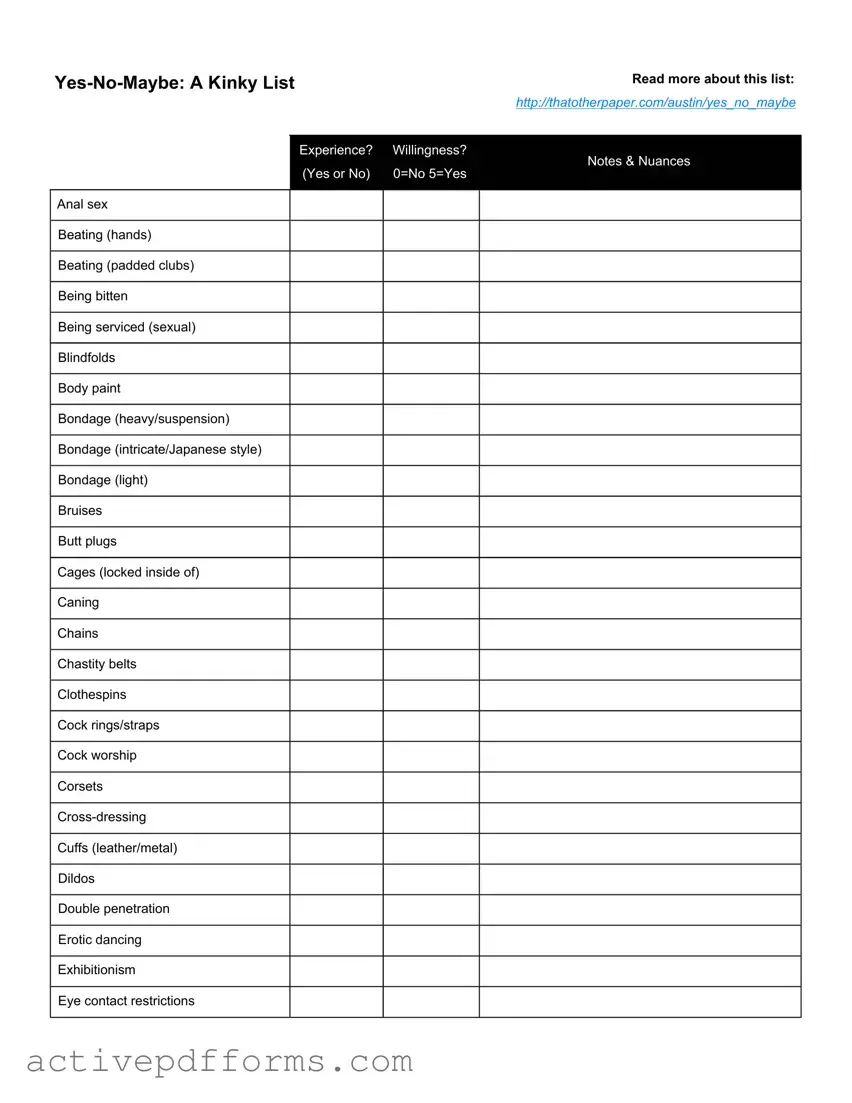Free Yes No Maybe List PDF Template
The Yes-No-Maybe List serves as a comprehensive tool designed to aid individuals or couples in communicating their preferences, boundaries, and curiosities regarding a wide range of sexual activities. It categorizes activities into "Yes" (experiences one is open to), "No" (experiences one is not open to), and "Maybe" (experiences one might consider under certain circumstances), ranging from the conventional to the kink-centric. Readily accessible information and suggestions on how to utilize this list can be found at this resource.
Edit Yes No Maybe List Now




